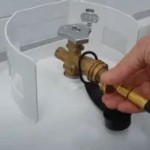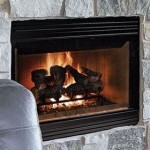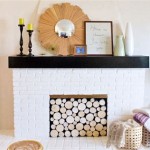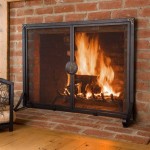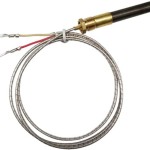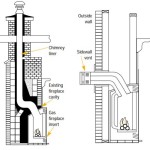Cleaning Fireplace Bricks Indoors: A Comprehensive Guide
Fireplaces provide warmth and ambiance to a home, but their frequent use inevitably leads to the accumulation of soot, creosote, and ash on the surrounding brickwork. This buildup not only detracts from the aesthetic appeal of the fireplace but can also contribute to unpleasant odors and, in severe cases, pose a fire hazard. Cleaning fireplace bricks indoors is therefore an essential maintenance task. This article provides a detailed explanation of the process, outlining various cleaning methods and preventative measures to keep indoor fireplace bricks looking their best.
The challenge of cleaning fireplace bricks lies in the porous nature of the material. Brick readily absorbs soot and other residues, making it difficult to remove stains completely. Furthermore, the cleaning process must be approached with caution to avoid damaging the bricks or the surrounding environment. Harsh chemicals can etch the brick surface, while abrasive cleaning techniques can lead to scratching and wear. Therefore, selecting the appropriate cleaning method and using the right tools are crucial for achieving optimal results without compromising the integrity of the fireplace.
Before embarking on any cleaning endeavor, it is paramount to prioritize safety. Wearing appropriate protective gear, such as gloves, eye protection, and a dust mask, is essential to prevent exposure to harmful substances and airborne particles. Ensuring adequate ventilation is equally important, especially when using cleaning solutions that may release fumes. Opening windows and doors or using a fan can help to circulate fresh air and minimize the risk of respiratory irritation.
Preparation and Assessment
The first step in cleaning fireplace bricks is proper preparation. This involves removing loose debris, such as ash and soot, from the fireplace and surrounding area. A shop vacuum cleaner with a brush attachment is ideal for this purpose. It is important to vacuum thoroughly, paying attention to crevices and corners where debris may accumulate. Covering the surrounding floor and furniture with drop cloths or plastic sheeting will protect them from spills and splatters during the cleaning process. This preparation step is crucial to ensuring a clean work environment and preventing further mess.
After removing loose debris, assess the condition of the brickwork. Examine the extent of the staining and identify any areas that may require special attention. This assessment will help determine the most appropriate cleaning method and the types of cleaning solutions that will be most effective. Look for any cracks or damaged bricks that may need repair before cleaning. Cleaning damaged bricks can exacerbate the problem and lead to further deterioration. Addressing these issues beforehand will help to preserve the longevity of the fireplace.
Consider performing a spot test on an inconspicuous area of the brick to gauge the effectiveness of the chosen cleaning solution and to ensure that it does not cause any discoloration or damage. This is particularly important when using commercially available cleaning products, as they may contain harsh chemicals that can react negatively with certain types of brick. A spot test will provide valuable information and help to avoid potentially irreversible damage to the fireplace.
Cleaning Methods and Solutions
Several methods can be employed for cleaning fireplace bricks, each with its own advantages and disadvantages. The choice of method will depend on the severity of the staining, the type of brick, and personal preferences. It is often preferable to start with the mildest method and gradually increase the intensity as needed.
One popular method involves using a mixture of warm water and mild dish soap. This solution is effective for removing light soot and grime without being overly abrasive. Apply the soapy water to the brick surface using a sponge or soft-bristled brush, scrubbing gently to loosen the dirt. Rinse thoroughly with clean water and dry with a clean cloth. This method is generally safe for most types of brick and is a good starting point for general cleaning.
For more stubborn stains, a solution of trisodium phosphate (TSP) can be used. TSP is a powerful cleaning agent that effectively removes grease, soot, and grime. However, it is important to use TSP with caution, as it can be harmful to the skin and eyes. Always wear gloves and eye protection when handling TSP and ensure adequate ventilation. Mix the TSP with water according to the manufacturer's instructions and apply it to the brick surface using a sponge or brush. Allow the solution to sit for a few minutes before scrubbing. Rinse thoroughly with clean water and dry with a clean cloth. Due to its caustic nature, TSP should be used sparingly and only when other methods have failed. Proper disposal of TSP-contaminated water is also necessary to prevent environmental contamination.
Another effective cleaning method involves using a mixture of baking soda and water. Baking soda is a mild abrasive that can help to remove stubborn stains without damaging the brick surface. Create a paste by mixing baking soda with water and apply it to the stained areas. Allow the paste to dry completely before scrubbing it off with a stiff-bristled brush. Rinse thoroughly with clean water and dry with a clean cloth. Baking soda is a relatively safe and environmentally friendly cleaning option.
For particularly challenging stains, a commercial brick cleaner may be necessary. These cleaners are specifically formulated to remove soot and grime from brick surfaces. However, it is important to choose a cleaner that is compatible with the type of brick in the fireplace and to follow the manufacturer's instructions carefully. Always test the cleaner on an inconspicuous area before applying it to the entire surface. Use the cleaner sparingly and rinse thoroughly with clean water after application. Some commercial brick cleaners contain harsh chemicals that can damage the brick or surrounding materials, so it is crucial to use them with caution.
Application Techniques and Tools
The effectiveness of any cleaning method depends not only on the cleaning solution but also on the application technique and the tools used. When applying cleaning solutions, it is important to work in small sections to prevent the solution from drying before it can be properly scrubbed and rinsed. Use a sponge or soft-bristled brush to apply the solution evenly to the brick surface, paying attention to crevices and corners. Avoid using excessive amounts of solution, as this can lead to dripping and staining.
Scrubbing is an essential part of the cleaning process. Use a stiff-bristled brush to scrub the brick surface, applying moderate pressure to loosen the dirt and grime. Avoid using excessive force, as this can damage the brick surface. Pay particular attention to areas with heavy staining, scrubbing in a circular motion to effectively remove the buildup. For deeply ingrained stains, it may be necessary to repeat the scrubbing process several times.
Rinsing is crucial for removing all traces of the cleaning solution and preventing residue buildup. Use a clean sponge or cloth to rinse the brick surface with clean water, ensuring that all traces of the cleaning solution are removed. Repeat the rinsing process as needed until the water runs clear. Failure to rinse thoroughly can leave a residue that attracts dirt and grime, negating the effects of the cleaning process.
Drying the brick surface after cleaning is important to prevent water stains and mildew growth. Use a clean, dry cloth to wipe down the brick surface, removing any excess water. Allow the brick to air dry completely before using the fireplace. This will help to prevent the formation of water stains and ensure that the brick remains clean and dry.
Preventative Measures
Preventing soot and grime buildup is just as important as cleaning fireplace bricks. Several preventative measures can be taken to minimize the need for frequent cleaning. Regular cleaning after each fire is key. This simple step can prevent the accumulation of soot and grime over time. Vacuuming the fireplace and surrounding area after each use will help to remove loose debris and prevent it from settling on the brick surface. This proactive approach can significantly reduce the effort required for future cleaning tasks.
Burning seasoned wood is another important preventative measure. Seasoned wood burns more completely, producing less soot and creosote than unseasoned wood. This reduces the amount of residue that accumulates on the fireplace bricks. Avoid burning trash, paper, or other materials in the fireplace, as these can produce excessive soot and harmful chemicals. Using a fireplace screen can also help to prevent sparks and embers from escaping and staining the surrounding area.
Regular chimney inspections and cleaning are also essential for preventing soot and creosote buildup. A professional chimney sweep can inspect the chimney for any obstructions or damage and clean it thoroughly to remove any accumulated creosote. This not only reduces the risk of chimney fires but also helps to prevent soot and grime from accumulating on the fireplace bricks. It is recommended to have the chimney inspected and cleaned at least once a year, or more frequently if the fireplace is used regularly.
Applying a sealant to the brick surface can also help to prevent staining and make cleaning easier. A brick sealant creates a protective barrier that prevents soot and grime from penetrating the brick. Choose a sealant that is specifically designed for brick and follow the manufacturer's instructions carefully. Apply the sealant evenly to the brick surface and allow it to dry completely before using the fireplace. This will help to keep the brick looking clean and new for longer.
By implementing these preventative measures, homeowners can significantly reduce the frequency and intensity of fireplace brick cleaning, ensuring that their fireplace remains a beautiful and functional focal point in their home.

How To Clean A Fireplace Diy Basics

How To Clean Brick The Home Depot

How To Clean Brick The Home Depot

How To Clean Fireplace Bricks 9 Steps With S Wikihow

How To Clean Brick Fireplaces Mantels Hearths And More My Space

How To Clean Fireplace Bricks Simple Practical Beautiful
:max_bytes(150000):strip_icc()/how-to-clean-fireplace-bricks-4587771-04-41cf6d2d0dbf40e88738bf54012079ba.jpg?strip=all)
Fireplace Maintenance Checklist 12 Tips For Wood Burning Fireplaces

Best Way To Clean A Fireplace Stacy Risenmay

How To Clean Fireplace Bricks 9 Steps With S Wikihow

How To Clean A Brick Fireplace The Family Handyman
Related Posts

